Old Style Diamond Cuts
December 12, 2015Single Cut Diamond -- At first glance, a single cut diamond may appear round to the uninitiated eye, but it is actually made up of two parts, neither of which is round. The crown and girdle, or the top portion that is seen by the viewer, is octagonal in shape. This octagon is positioned atop a cone-shaped pavilion that usually tapers to a point (technically known as a culet) to fit inside a ring's setting. Typically this combination of geometric cuttings results in a single cut diamond that has sixteen to eighteen different facets. Single cut diamonds are among the oldest antique diamond cuts. Their history dates to the 1300s.
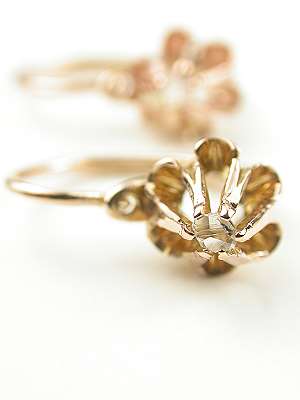
Rose Cut Diamond -- So named because it appears as an unfurling rosebud to the eye, the antique rose cut diamond has a domed crown that is multifaceted and rises to a single peak. Flat on the bottom, the rose cut diamond can have anywhere from three to 24 triangular facets, although 12 and 24 are the numbers most frequently encountered. The rose cut diamond can be traced back to the 1500s. Of the antique jewelry periods, the Georgian and Victorian eras are the most likely to have incorporated the rose cut into their engagement ring designs.
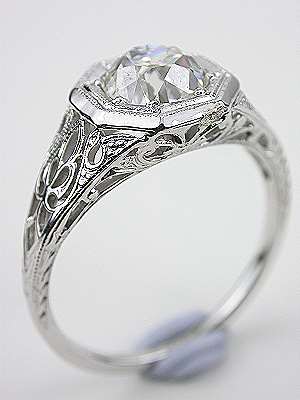
Old Mine Cut Diamond -- The old mine cut diamond bears some similarities to the single cut in that it features two parts: a crown and a pavilion. However, both of these portions are higher and deeper than they are in a single cut. The corners of the old mine cut diamond are also rounded for a softer appearance that resembles the modern-day cushion cut diamond. Like rose cut diamonds, old mine cut diamonds were prevalent during the antique Victorian and Georgian eras, but they date all the way back to the 1700s.
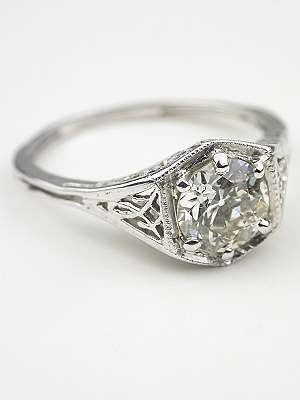
Old European Cut Diamond -- Viewed straight on from overhead, the old European cut diamond may look like either a crown or a pavilion. The crown faceting has a star at its center with triangles and rhomboids surrounding it. The pavilion cutting looks like an eight-sided leaf or snowflake with a pinpoint culet at its center. The old European cut diamond tapers to a point like the single cut diamond but it has more facets than any of the other antique old cut diamonds at 58. The modern-day round brilliant cut diamond draws its inspiration from the old European cut diamond. First appearing in the 1800s Victorian era, the old European cut diamond remained popular into the Edwardian and Art Nouveau periods as well.
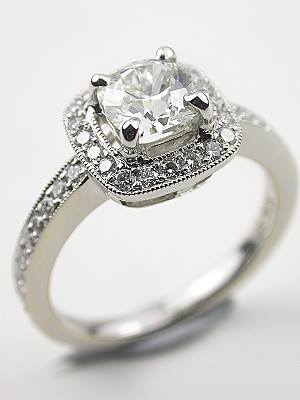
Antique Cushion Cut Diamond -- The antique cushion cut diamond made its first appearance in the 1830s and became all the rage. It stayed widely popular up to the turn of the century. As a result, this diamond cutting is most often found in Victorian engagement rings. Rectangular or square rather than round in shape, the antique cushion cut gets its name from its rounded off corners, which give the diamond a cushioned appearance.
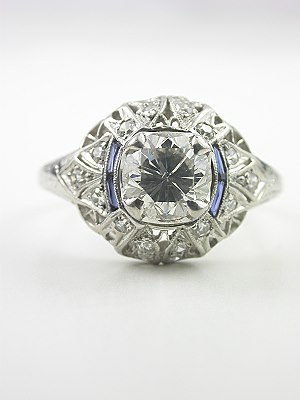
Modern Round Brilliant Cut Diamond -- The most current of the antique diamond cuts, the modern round brilliant cut entered the diamond scene in 1919 after cutting experimentation resulted in a technique that maximized the diamond's fire and brilliance. It resembles the old European cut diamond in its circular girdle and high number of facets. Antique engagement rings from the Art Deco and Retro periods are most likely to feature modern round brilliant cut diamonds.
Topazery's antique engagement rings collection has an old style diamond to suit everyone's fashion style and personality.
Return to blog home





 Facebook
Facebook Pinterest
Pinterest Instagram
Instagram